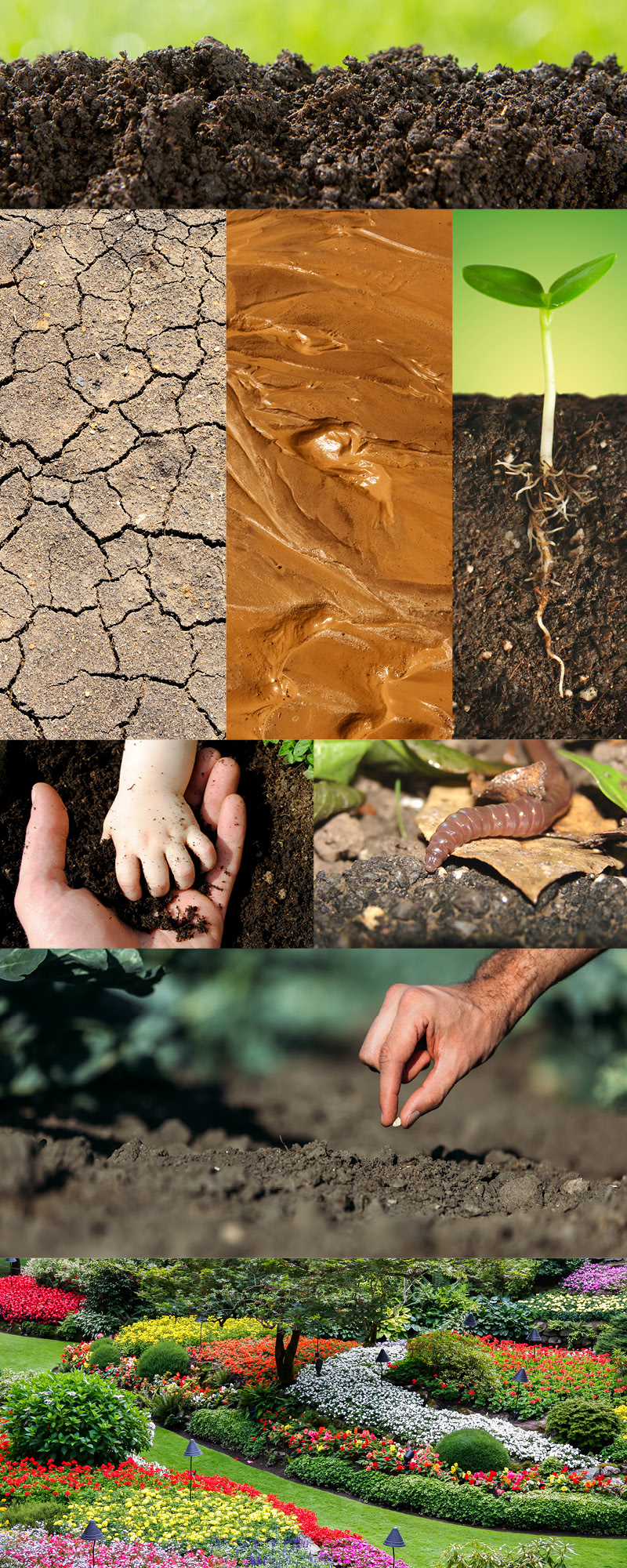Beautiful

Love this time of year. Renewal & beautification at home and at the office. There’s nothing like all that fresh color popping up everywhere. Time to get your hands dirty!!! :)))))))
Now that the doldrums of winter are behind us (please no more surprise storms) it’s time to turn to our gardens and and plan to put in some color to beautify our days. In full unabashed disclosure, between Jackie and one of my daughters Michelle I never have to worry about what is going to be planted. I am simply there as cheap labor and laughs! I went online in search of the “New” Plants for ’22, and hit the jackpot with ideas from savvygardening.com. Special thanks to Tara Nolan with her descriptions and introductions to new plants that come from an array of sources—trial garden visits, emails from growers and colleagues, presentations, seed and plant catalogs, along with her behind-the-scenes look at how growers come up with new plant introductions. Be sure to write them down, and then go hunting at your nearby garden center. I will say that later this year Jackie and I plan on visiting theBiltmore Estate which has some of the most beautiful gardens in the world!
When the weather is right, before you plant, here are some great “get ready” garden tips,:
1. Give your garden a ‘spring-clean’ – After the winter months, the garden will be in need of a good tidy-up. Sweep up dead leaves with a rake, pull out any weeds around the garden and borders, remove dead branches or plants and add these to your compost pile. In addition, late winter is the best time to prune (cutback) your plants and old flowers to remove any dead or diseased growth. Prune trees before they ‘leaf out’ to encourage new buds
2. Buy some summer-flowering bulbs and seeds – Now is the best time to order some summer-flowering bulbs which are ideal to plant in spring. Flowers such as lilies, dahlia and gladioli can be bought now to plant, and other seeds will benefit from being planted in pots indoors, before being transplanted into the soil. One can never have too many.
3. Prepare the soil – you need to get the soil ready in your garden beds. Your soil may be in poor condition due to frost from the winter, which makes it become compacted. In this case, you need to till or loosen the soil by turning it over with a tiller or spade. It’s advised to dig in a depth of 12-14 inches to work the soil and loosen it up. Add a fresh layer of mulch or compost to improve the surface of the bed.
4. Start your vegetable plot – If you want organic veggies, now is the right time to plant. Hardy vegetables such as potatoes, peas and some lettuces grow well in cool soil. Bear in mind, that as soon as your soil reaches 42-degrees Fahrenheit, you can start to sow directly outside. Other veggies you can sow include carrots, arugula, spinach, leeks and beetroots. By planting these vegetables now, they should be ready to eat by early summer.
Now, on to the show …
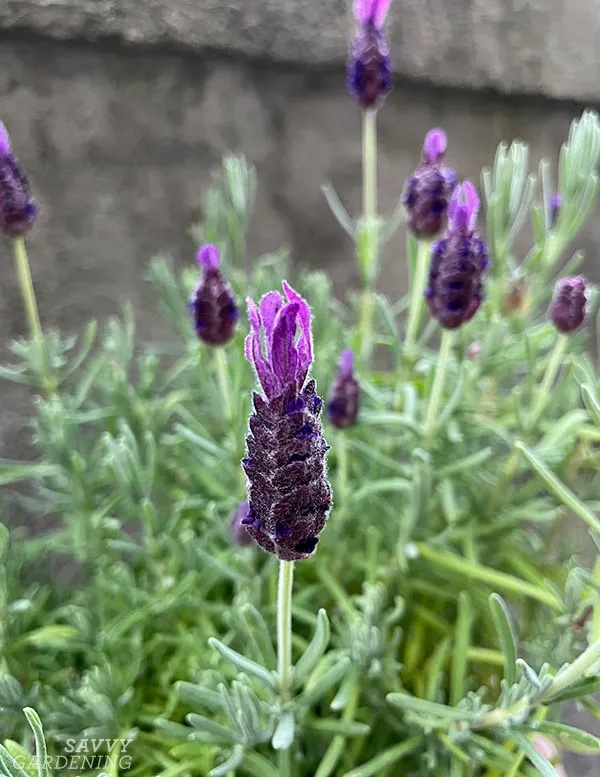
Spanish lavender (Lavandula stoechas) Primavera – I think this was my favorite new plant that I this year, probably because I planted it in my new favorite terracotta pot. I loved the flouncy blooms, or “flags” as they’re called, that wave above the flowers of ‘Primavera’ from Darwin Perennials. The blooms attract bees and butterflies, and the plant loved its sunny spot on my front porch area.
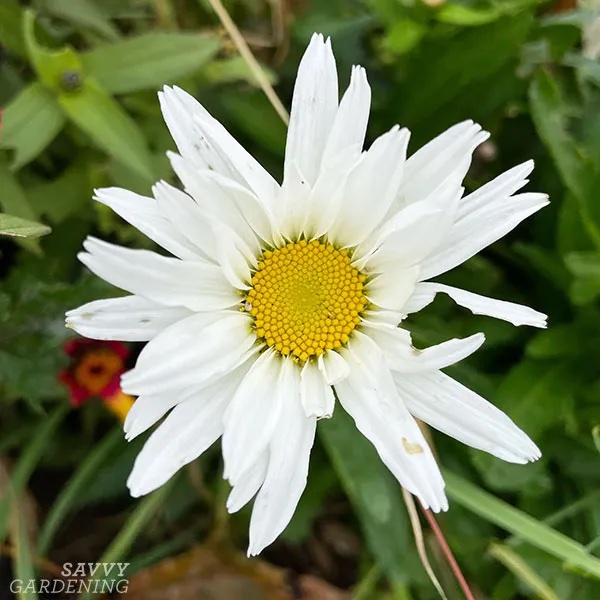
Leucanthemum ‘White Lion’ – This perennial beauty is called “the spring Shasta” on the grower’s website. Which means White Lion is a long-blooming, three-season perennial that will start its show in late spring. A new introduction from Kieft Seed, my two shasta daisy plants bloomed through the end of October in my front yard garden. Happy in full sun, it is hardy down to USDA zone 3b and extremely drought tolerant.
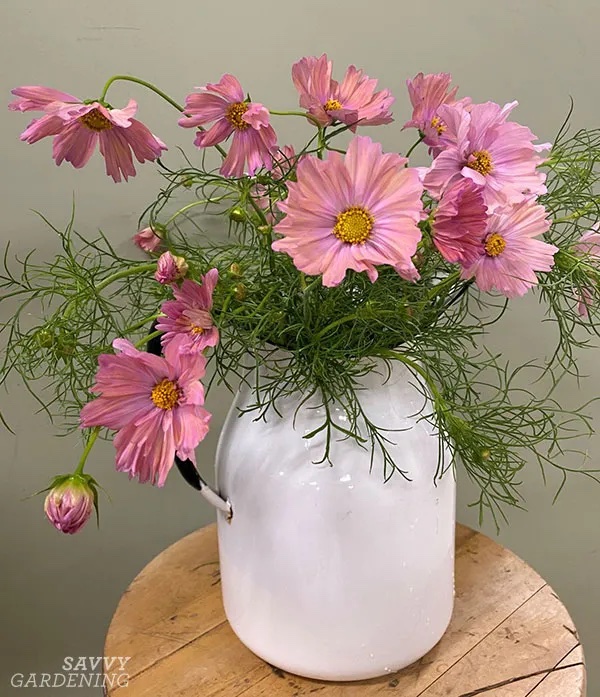
Cosmos ‘Apricotta’ – ‘Apricotta’, with its lush, pink flowers with hints of apricot and yellow are on my must-grow list. A new variety from William Dam Seeds, they will bloom through the first frost.
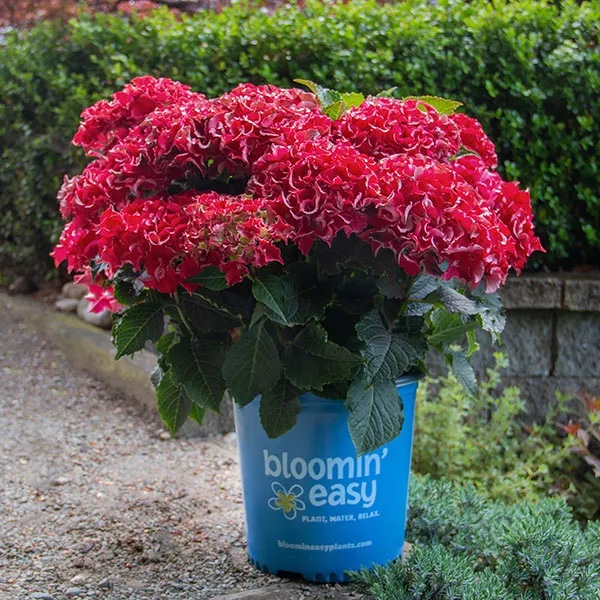
‘Frill Ride’ Bigleaf Hydrangea – I can never resist a ruffle or a frill, so out of all the new hydrangeas Bloomin’ Easy is releasing for 2022, I couldn’t resist ‘Frill Ride’. This big-leaf hydrangea features enormous deep-pink, frilly flowers. I imagine they’d look pretty stunning in a dried arrangement, too. This shrub is hardy down to zone 5 and prefers part sun (three to four hours a day of sun in the morning, with filtered sun the rest of the day). It grows to be about two to three feet tall and equally wide.
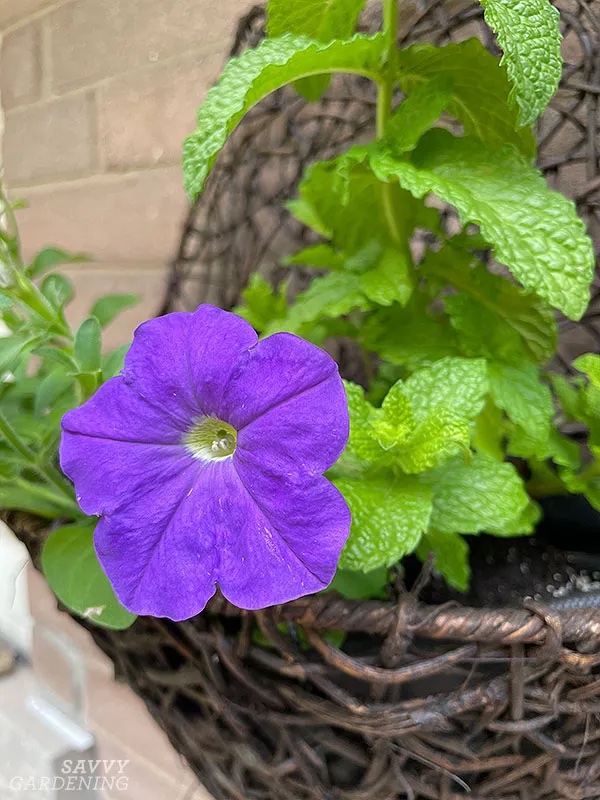
Easy Wave Sky Blue Spreading Petunia – Depending on the light, and I suppose, the plant (because sometimes certain growing conditions can affect the blooms), the Easy Wave Sky Blue petunia looks a lot like Very Peri, the Pantone Color of the Year. What I liked this plant was its contrast and slightly unusual blue-ish hue in a couple of my containers. The plants bloomed throughout the hot summer and into fall. They also spread nicely in a garden.
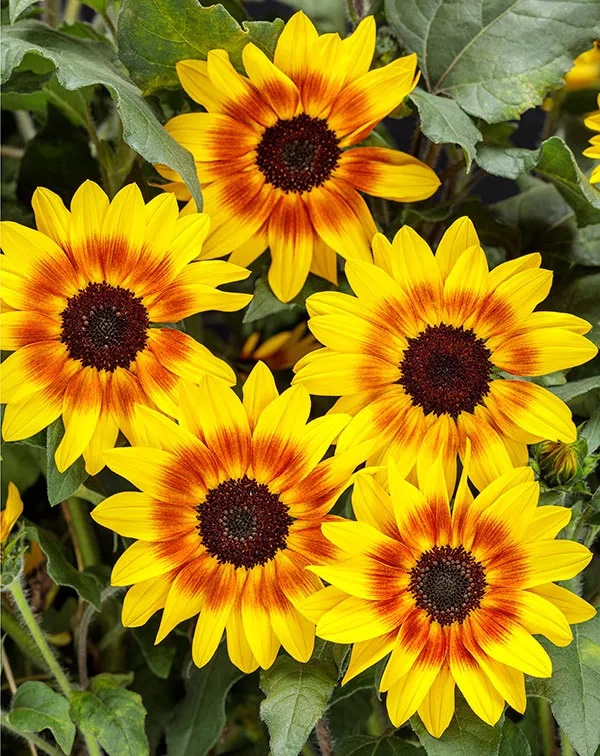
Suncredible Saturn Sunflower – This bright, cheerful Helianthus hybrid is everblooming, meaning season-long blooms. Part of the new Proven Winners lineup, the website suggests planting these as a living screen or along a fence. Plants reach up to three feet in height. Plants aren’t super fussy—they like rich soils but will grow in poorer soils. These drought-tolerant beauties also make great cut flowers and attract bees and butterflies.
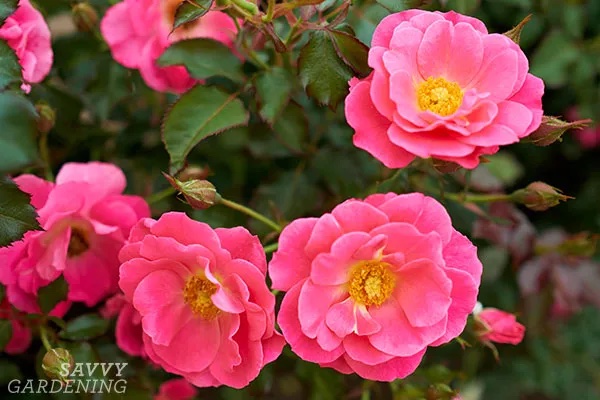
Aurora Borealis Rose – I love the advances that have been made in rose breeding over the last several years to create hardy roses that have greater pest and disease resistance. This new kid on the block, from Vineland’s 49th Parallel Collection was developed really close to my home, too. I feel a certain pride when I tell people about this compact shrub. Aurora Borealis is the third rose in this collection.
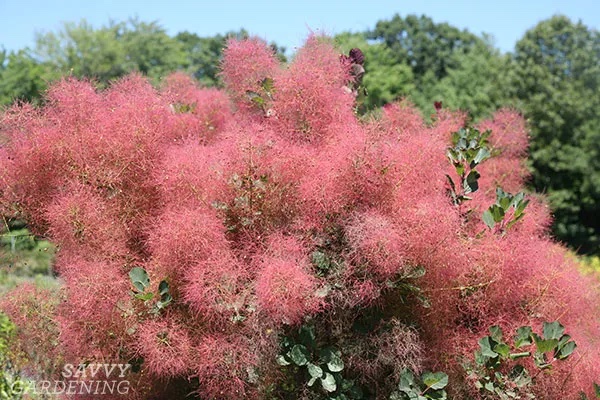
The Velvet Fog Smokebush – I have a thing for texture, so the fluffy, soft-looking plumes of smokebushes always catch my eye. This one is pretty spectacular and apparently grows more flowers than a conventional smokebush. Clouds of pinky-red seem to hover atop the blue-green foliage of this showy shrub. Mature plants range from 60 to 96 inches (152 to 244 cm) tall and should be planted in part sun to full sun.
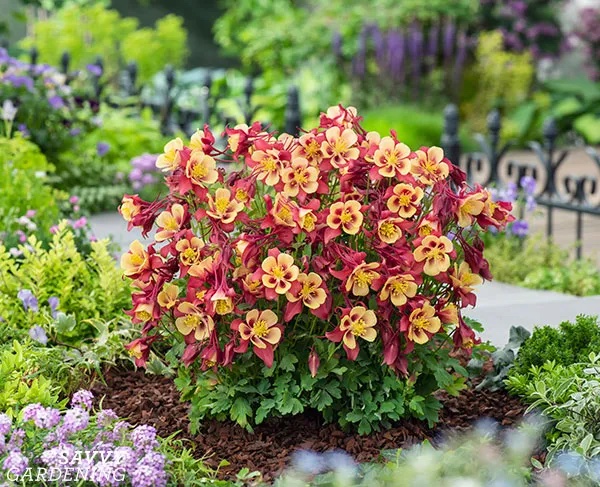
Aquilegia Earlybird – I don’t think I’ve even seen such a profusion of blooms all together in a columbine plant, in such a short little tidy clump. And you can see their faces! The blooms are so stunning, on all three from this series: Purple Yellow, Blue White, and Red Yellow. These plants are hardy down to zone 3a!
Visit https://savvygardening.com/new-plants/ to see dozens of more ideas to brighten up your garden this spring – and when things begin to bloom, be sure to send me a photo at skowalski@khtheat.com
::::::::::::::::::::::::::::::::::::::::::::::::::::::::::::::::::::::::::::::::::::::::::
DO YOU LIKE CONTESTS?
Me, too.
As you may know the Kowalski Heat Treating logo finds its way
into the visuals of my Friday posts.
I. Love. My. Logo.
One week there could be three logos.
The next week there could be 15 logos.
And sometimes the logo is very small or just a partial logo showing.
But there are always logos in some of the pictures.
So, I challenge you, my beloved readers, to count them and send me a
quick email with the total number of logos in the Friday post.
On the following Tuesday I’ll pick a winner from the correct answers
and send that lucky person some great KHT swag.
So, start counting and good luck!
Oh, and the logos at the very top header don’t count.
Got it? Good. :-))))
Have fun!!
::::::::::::::::::::::::::::::::::::::::::::::::::::::::::::::::::::::::::::::::::::::::::

